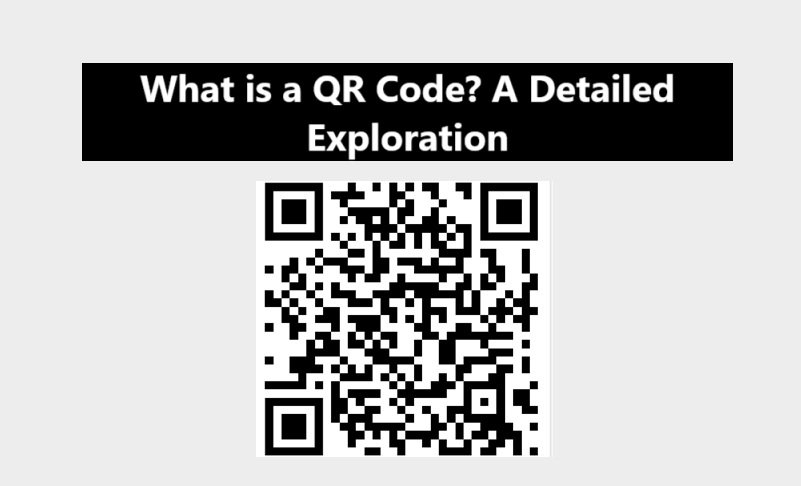
Introduction
A QR Code (Quick Response Code) is a type of two-dimensional barcode that can store large amounts of data and can be quickly scanned by devices like smartphones and barcode readers. QR codes have become an essential tool in marketing, payments, logistics, authentication, and various other industries due to their versatility and ease of use.
History of QR Codes
QR codes were first invented in 1994 by the Japanese company Denso Wave, a subsidiary of Toyota. The primary goal was to create a code that could be scanned at high speed to track automotive parts during manufacturing. Unlike traditional barcodes, which only store data in one direction (1D barcodes), QR codes can store data in both horizontal and vertical directions, making them far more efficient.
Structure of a QR Code
A QR code consists of several distinct elements:
- Finder Patterns: The three large squares found in three corners of the code help scanners identify and properly orient the QR code.
- Alignment Patterns: These smaller patterns ensure that the code can still be read even if it is distorted or at an angle.
- Timing Patterns: These alternating black and white modules help the scanner determine the size of the data matrix.
- Version Information: Encodes the QR code version (size and data capacity variations).
- Format Information: Stores error correction level and mask pattern information.
- Data and Error Correction Codewords: This area contains the actual encoded data and error correction information.
Types of QR Codes
QR codes come in different forms based on usage and structure:
- Static QR Codes: Fixed and cannot be edited once created.
- Dynamic QR Codes: Can be updated with new information even after being generated.
- Micro QR Codes: A smaller version of standard QR codes used for compact applications.
- Frame QR Codes: Incorporate design elements around a central QR matrix for branding purposes.
- QR Code Model 1 & 2: Original and enhanced versions with increased data storage capacity.
How QR Codes Work
When a QR code is scanned, the device reads the patterns of black and white modules and converts them into binary data. The data is then interpreted based on the encoding format, which could be a URL, text, payment information, or other forms of digital content. Advanced QR codes include error correction, ensuring readability even if part of the code is damaged or obscured.
Uses and Applications of QR Codes
1. Marketing and Advertising
Businesses use QR codes on posters, business cards, product packaging, and billboards to direct users to websites, promotional offers, and digital content.
2. Payments and Transactions
QR codes are widely used in digital payment systems such as UPI (Unified Payments Interface), PayPal, Google Pay, and Apple Pay to facilitate quick, contactless transactions.
3. Authentication and Security
Many online platforms use QR codes for two-factor authentication (2FA), ensuring secure logins and data access.
4. Retail and Inventory Management
Retailers use QR codes to track inventory, streamline checkout processes, and provide additional product details to customers.
5. Healthcare and Medical Fields
QR codes help in medical record management, patient identification, and linking to prescription details or healthcare portals.
6. Education and Information Sharing
Educational institutions embed QR codes in books, study materials, and presentations to link students to additional resources.
7. Event Management and Ticketing
Event organizers use QR codes for ticket validation, entry passes, and contactless check-ins at concerts, conferences, and sports events.
Advantages of QR Codes
- Fast Scanning Speed: Unlike barcodes, QR codes can be scanned in milliseconds.
- High Data Storage Capacity: Stores significantly more information than a traditional barcode.
- Error Correction Feature: Remains scannable even if damaged up to a certain extent.
- Versatile Content Encoding: Can store text, URLs, emails, payment details, and more.
- Contactless & Secure: Ideal for payment systems and authentication.
- Easily Generated and Shared: Free QR code generators make it easy to create custom codes.
Challenges and Limitations of QR Codes
- Requires a Scanning Device: A smartphone or scanner is necessary to read QR codes.
- Potential Security Risks: Malicious QR codes can lead to phishing attacks or malware downloads.
- User Awareness: Some people are still unfamiliar with scanning and using QR codes effectively.
The Future of QR Codes
With the rise of digital transformation, QR codes continue to evolve. Innovations such as NFC (Near Field Communication) integration, AI-enhanced scanning, and blockchain-based QR authentication are making QR codes even more powerful. Businesses and industries are adopting QR technology for seamless interactions, from digital payments to smart packaging.
Conclusion
QR codes have revolutionized how we share and access information. Their ease of use, high storage capacity, and versatility make them indispensable in numerous fields, including marketing, payments, security, and inventory management. As technology advances, QR codes will likely remain a key tool for businesses and consumers alike, bridging the gap between the physical and digital worlds.





